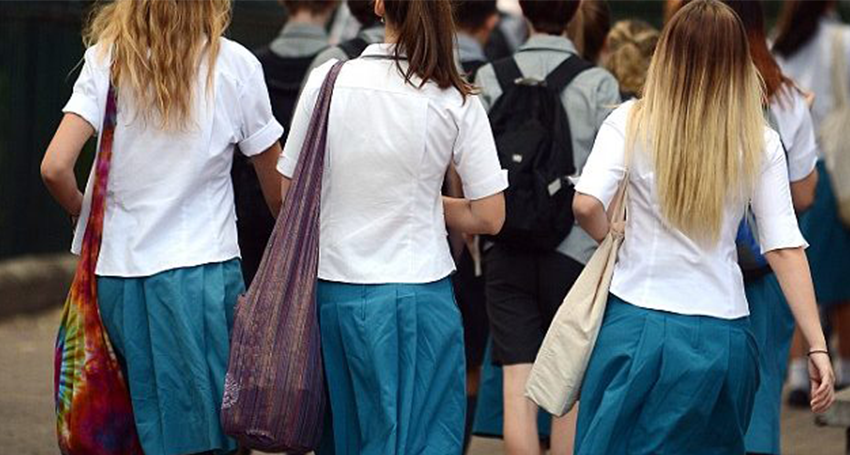Should schoolgirls be compelled to wear a skirt at formal events?
A Queensland tribunal has ruled it is not discriminatory for a school to require girls to wear a skirt at formal events. Academic Kayla Mildren investigates.

The private high school said girls needed to wear skirts for occasions including excursions, ceremonies and class photographs.
A female student had complained to the Queensland Civil and Administrative Tribunal about different treatment for boys and girls.
While the tribunal acknowledged there was “different treatment between the sexes”, it found there was not enough evidence to show this was “unfavourable”.
Why are female students still made to wear skirts and dresses? And why is this a problem?
In Australia, uniform rules are largely determined by individual schools.
Schools have some obligations to their communities, governing bodies (such as state education departments and independent school peak bodies) and anti-discrimination legislation.
You might like
For example, Victoria’s Education Department requires policies to include an exemption process and “support inclusion”.
But ultimately, it’s up to the school to decide how their uniform looks, who can access different items, where and when items may be worn, and what non-uniform items are regulated.
The pants question
Pants occupy an odd space here. For public schools, most state education departments require girls to have the option of pants (which can include shorts or trousers), for both sport and regular uniforms.
This is a relatively new standard. For example, Queensland introduced this in 2019 and New South Wales allowed it from mid-2018.
Often, these changes were prompted by sustained campaigning by families and lobby groups.
Stay informed, daily
But private schools do not have the same obligations. Some are starting to update their policies and allow girls to wear shorts or pants if they choose.
Others, however, have been met with conservative backlash when they do.
Girls’ access to pants is not as straightforward as a school including them within the uniform policy.
As researchers note, simply allowing girls to wear pants may not be enough. If school cultures are not welcoming, or if the design is uncomfortable, girls may still avoid them.
Or, as can be the case with private schools, a school may offer pants on a limited basis, such as only during winter. Alternatively, there may be a special order process for pants, making them difficult to obtain.
Or schools may permit their use, except on special occasions such as photo days or excursions, like the Queensland case.
The skirt itself isn’t the issue. The element of choice is.
As researchers note, skirts and dresses are linked to outdated expectations of modesty and femininity. They can be targets of fetish and harassment, and entrench binary ideals of gender.
Flexible policies support gender-diverse youth and enable all students to select uniform items based on their body rather than their gender. Research shows offering students pants or shorts can also promote physical activity.
These school uniform debates are also taking place amid concerns about misogyny and harassment of female students and teachers in schools and concern for queer young people’s wellbeing.
The longer gender-normativity is baked into school policies, the longer students are denied their right to equitable education. And the longer that schools promote the idea of “girl” and “boy” as opposite and concrete categories, the harder it will be to combat schoolyard misogyny and queerphobia.
Kayla Mildren is PhD Candidate in the politics of school uniform policies, Griffith University. This article first appeared in The Conversation and is republished here under Creative Commons Licence.




